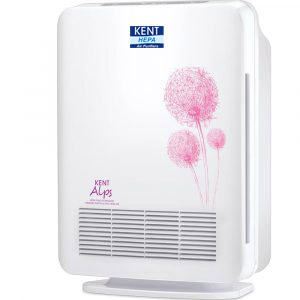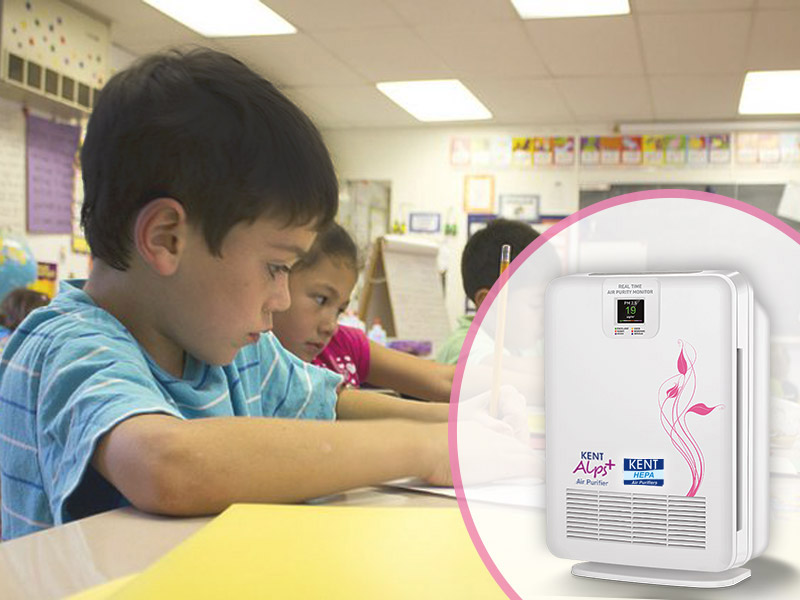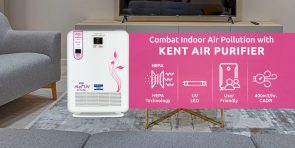The Relation Between Indoor Air Pollution and its effect on Children’s Performance
Indoor air pollution is a widespread environmental hazard faced by schools in India. As children spend most of their time in schools, they are more vulnerable to respiratory problems. Indoor air pollutants such as VOCs present in cleaning supplies, dust, and PM2.5 trigger asthma and allergy symptoms among children. According to a report, the pollution level in Delhi schools is five times higher than the safety limits. The situation is so alarming that it is becoming a national emergency. In fact, air pollution kills one lakh children under the age of five every year in India. The findings suggest that the issue of indoor air quality is as important as the outdoor air quality. Taking into consideration the increasing concerns of indoor air pollution, the blog discusses the impact of indoor air pollution on children’s performance and ways to improve IAQ. Read on.
How Does Indoor Air Pollution Impact Academic Performance?
Children spend a lot of time in schools during their growth years. The indoor air quality of school buildings, especially the old ones is a reason for concern. Old school buildings are a safe haven for mold growth. Poor ventilation, water leaks, pet infestation further add to the problem. The presence of dead skin cells, paper dust, chalk dust, and clothing fibers increase the levels of PM 2.5, PM 10, and PM 1.5. The quality of air has an impact on the attendance of kids. Breathing impure air increases absenteeism as a result of asthma and allergies. These factors have an impact on the academic performance of children.
Why are Children more Vulnerable to Indoor Air Pollutants?
The presence of indoor air pollutants not only increases the risk of asthma and other respiratory problems but also lowers the concentration levels of kids. As children have underdeveloped lungs, they are more susceptible to the health effects caused by air pollution. The presence of indoor air pollutants irritates their tender lungs, thereby triggering asthma and respiratory problems. Bad indoor air quality also impacts the development of endocrine glands, nervous and immune system of children. In addition, illnesses such as cold and flu easily spread among kids as a result of their underdeveloped immune system. The lethal combination of poor ventilation and indoor air pollution spread infectious airborne diseases among children.
Ways to Improve Indoor Air Quality in schools
Remove Sources of Pollution:
One of the ways to improve indoor air quality in schools is by removing the sources of pollution. Keep glues, sketch pens, markers, and other stationery items that produce gases closed after using them. The furniture and paints used in classrooms should not contain VOC, which is a major source of indoor air pollution. If your child has any kind of allergy, inform the teachers about the potential triggers.
Use a HEPA Air Purifier

Another easy way to reduce indoor air pollution in schools is by installing a HEPA air purifier. Indoor air pollutants such as mold spores, dust mites, pollen and pet dander are some of the common carcinogens that are highly injurious to health. The HEPA filters present in the air purifiers catch and trap carcinogen particles which are larger than 0.3 microns in diameter. These are purifiers are also highly
Also Read: 5 Ways to improve indoor air quality in your kid’s Bedroom
Control Dust
Dust mites are the main triggers of asthma and allergies. Approximately 1 in 13 children have asthma, resulting in absenteeism. In fact, dust mites, pests, mold are the common pollutants present in schools. This is the reason why it is important to take some initiative to control indoor air quality. Using a HEPA vacuum cleaner to remove the dust and dirt from surfaces to keep the indoor air clean. Instead of carpets, it is advisable to use walk-off mats at the entrance of schools to trap dirt.
Proper Ventilation
Installing an HVAC system in schools plays an important role in improving indoor air quality. Supply of fresh air and proper ventilation maintain the humidity level in the classrooms. Proper humidity levels prevent mold growth and keep the indoor air free from pollutants.
Last Few Words
Though many people have started taking steps to improve air quality at home, schools also need to make efforts to reduce pollution. Installing air purifiers in schools will not only reduce pollution but also improve the performance of children. KENT provides an extensive range of air purifiers that effectively remove indoor air pollutants so that you breathe safe. Visit our website for top quality air purifiers with HEPA filters.
To know more about indoor air pollution read our inside story.





